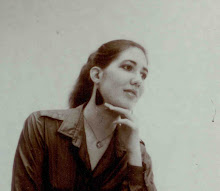On a little back street next to the 405, behind a two story high green wrought iron gate, hides an old fashioned factory store where hats are created. Cascading through a rainbow of colors for autumn: rust, green, blue, purple, brown, grey and black, on walls and racks and tables, if you don't see a hat you like they will custom make one specifically for you. Also offered are hand embroidered scarves, flower pins, jabats, feathered headbands, reworked vintage sweaters and cashmere scarves. Behind the front desk is a hold tree where they'll keep a hat awaiting your final decision. For the last twenty years Louise Green Millinery Company has supplied Los Angeles with vintage romance in the form of hats.
Hats provide warmth and protection from the elements but they are so much more. In a bygone era hats were tipped to say good-bye and taken off entirely when greeting a lady to show respect or flirt, when passing in the street, if the lady you are speaking to is a stranger or if you saw your wife. Tipping your hat to a man could be an insult in the wild, wild west. Ladies kept their hats on indoors unless wearing an evening gown and removed daytime hats at night. Men removed their hats indoors unless it was a public building. In a house of prayer sometimes head coverings were donned to show humility and sometimes hats were doffed to show respect. Hats worn to the theatre or the movies were removed if they obstructed someone’s view. Men put decoration on the left hand side of the head band and women put decoration on the right side. Etiquette, good manners and respect all tied up in scraps of fur, felt, feathers, leather and lace.
If you threw your hat in the ring you were saying you wanted to get involved. If you reacted at the drop of a hat you were impulsive. To make something magically appear you pulled it out of your hat. You could throw your hat in the air to celebrate and show happiness. Passing the hat meant you were collecting money, if you came to someone hat in hand you needed a favor. Secrets were kept under one’s hat and anything boring was old hat. Different hats signified different jobs. Home, no matter how humble was where you hung your hat. Today although the sayings remain very few of the hats do.
Women had garden hats, church hats and hats for special events that inspired conversation. Cloches, bonnets, bandeaus, berets, and toques were worn with pride. Men had bowlers, fedoras, top hats, panama hats, pith helmets and trilbies to cover the inevitable signs of aging. Little boys and girls tried on their parent’s hats and shoes to feel grown up. Different nations had different hats identified with them. The fez, the chapeau, the tam o’shanter, the homburg, the turban, the sombrero and the Greek sailor’s cap were a few of these. Sadly enough today, public consciousness sees terror wearing a turban and controversy wearing a veil.
Hats signify jobs for firemen, cowboys, construction workers, baseball players, football players, pirates, police men, sailors, palace guards and Santa to name just a few. We use hats to tell the world which teams we root for and that we’ve graduated from school. But, sadly enough, except for baseball caps, hats are seldom seen on a regular basis in today’s world.
If clothes make the man than hats make a statement. Who could picture Abraham Lincoln without his top hat? It now resides in the Smithsonian. Fred Astaire’s top hat was flaunted with style and grace. Frank Sinatra always said “Cock your hat – angles are attitudes.” John Wayne’s Stetson was auctioned off for $75,000 in 2007. Jackie O made the pill box hat famous and Princess Di loved hats of every kind. Villains wore black hats and heroes wore white, shades of gray were few and far between. John Wayne would never have worn a pink cowboy hat but on Dolly Parton it works.
The best character actors use hats to change how they are perceived. Charlie Chaplin once said “I thought I would dress in baggy pants, big shoes, a cane and a derby hat, everything a contradiction: the pants baggy, the coat tight, the hat small and the shoes large.” All the famous detectives had hats to suit their styles, John Steed’s bowler, Sherlock Holmes’ deerstalker, Philip Marlowe’s crumpled fedora, Sam Spade’s crisp one. Adventure heroes have theirs as well. Who could forget Davy Crocket’s coon skin cap, Indiana Jones custom fedora, and Crocodile Dundee’s trimmed with crocodile teeth and skin.
The world would be a much less interesting place without hats. Those who don’t wear them are missing out. I don’t believe in romanticizing the past as history, however, bringing forward and reinterpreting, refining, reintroducing old styles, timeless fashions, art and music only enriches the foundations of the present.




No comments:
Post a Comment